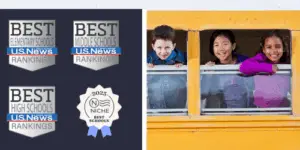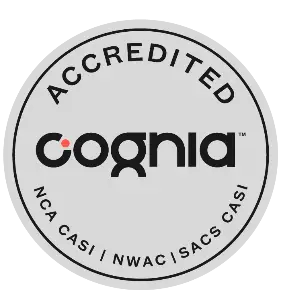On a Wednesday morning in January, 2017, Unified Police recommended that Midvale Elementary go on “shelter in place” while they responded to reports of a bank robbery near the school.
All students were already safe inside their classrooms, busy learning as usual and largely oblivious to the safety protocol, which lasted all of 20 minutes. Had any students or faculty been outside on the playground, Principal Chip Watts and his administrative team would have calmly escorted them back inside the building and directed them to return to class before locking the doors and notifying parents. School would have carried on as it always does with students free to move about the building, enjoy lunch with friends, and visit the Media Center or Main Office.
“The whole point behind a shelter-in-place protocol is to safeguard students without interrupting instruction or causing them worry,” Watts says. “When done right, it should feel to students like just another great day to be a Mustang.”
Put simply, shelter-in-place is a precaution taken to keep staff and students safe indoors when there is a hazard outside the school building, such as a police action in the neighborhood, or extreme weather. In such instances, Canyons District will immediately notify parents by phone or email, and instruct them to avoid coming to campus to collect their children until further notice. Rushing to campus during an emergency protocol can impede law enforcement, put adults in harm’s way, and be unnerving for students. 
To parents and families, it can be unsettling to receive a shelter-in-place notice from their child’s school, especially in light of heightened awareness over school safety. “What parent hasn’t felt a pang of worry as they watch their child walk from sight. It’s hard when you’re not around to protect them,” says CSD’s Responsive Services Director BJ Weller. “But as parents, it’s important for us to remain calm and use care when talking to our children about emergencies. Children are intuitive and take cues from us, and sometimes our voices or faces betray our fears, which then rub off on our kids.”
The reality is that schools are the safest places for childrenat all times, including during an emergencyand they’re getting safer. It is, in fact, because they are safe havens for learning that they are often called upon to serve as the linchpin of a community’s response to an array of emergencies, from earthquakes to hazardous spills, says CSD’s Risk Management Coordinator Kevin Ray. “In an emergency, I can’t think of a safer place for children than their neighborhood school.”
 CSD is committed to preserving school climates where students feel welcome, cared for and safe. The shelter-in-place protocol, for example, was designed as a less-intrusive alternative to lockdowns, which entail locking interior doors, shutting off all lights and taking cover.
CSD is committed to preserving school climates where students feel welcome, cared for and safe. The shelter-in-place protocol, for example, was designed as a less-intrusive alternative to lockdowns, which entail locking interior doors, shutting off all lights and taking cover.
“Lockdowns, which are reserved for immediate threats on a campus, save lives, and Canyons District will always err on the side of safety,” Ray says. “But whenever we enact a protocol we also have to consider the disruption it can cause. If we can keep students and employees safe and comfortable by other means, we do.”
This is also why Canyons focuses not just on outfitting facilities with modern security features but also on fortifying the social-emotional needs of children. Through Weller’s Responsive Services Department, all CSD schools have been assigned a school psychologist and/or a counselor and social worker all highly trained professionals who can help guide students through challenging emotions.
Building a positive climate, where all children feel like they are vital and valued members of the school community, is a top priority of principals and teachers. CSD embraces a philosophy of teaching appropriate and positive behaviors instead of punishing misbehaviors. Schools also work to set consistent rules and expectations and keep classrooms free from bullying and discrimination. “Learning can only happen in an environment where students feel safe, and building a climate of predictability is part of that,” Weller says.
Predictability is another good argument for regularly conducting carefully-planned safety drills, which empower students to take action in an emergency and ease the stress of going through a real-life emergency. “Our aim is to maintain environments where children feel safe to develop interests, raise their hands, reach out to new friends, and know they are surrounded by caring adults,” Weller says.
Parents can help by familiarizing themselves with CSD’s emergency protocols and emergency drill schedule. Please tell your child that the most important thing to do in an emergency is to follow the directions of their teachers and school staff. It’s important to reassure them and let them know that you have confidence in the training that school staff have received.
And, please remember if you see or hear something that makes you feel unsafe, report it to your school principal or through the anonymous crisis and safety tipline, SafeUT.




